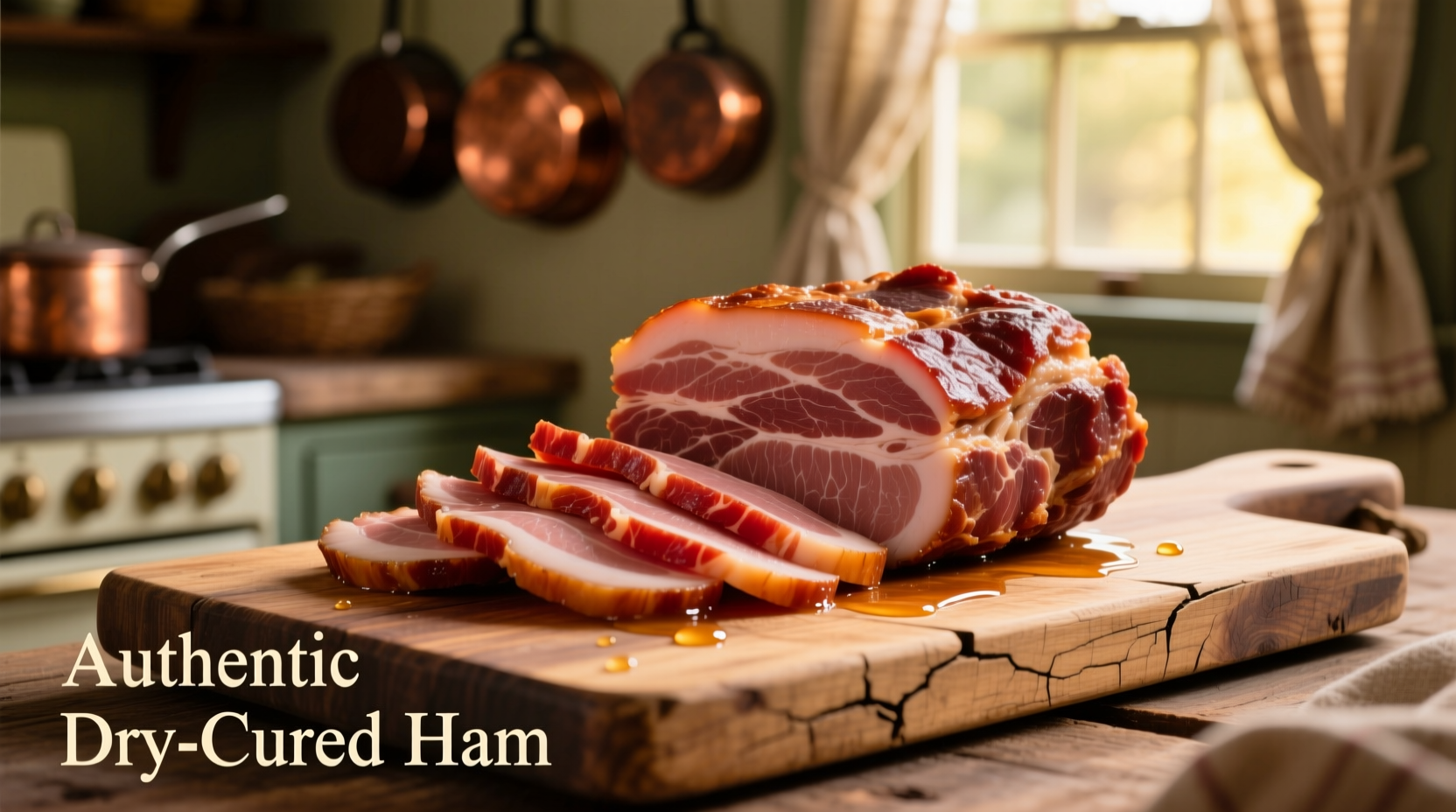Country ham isn't your ordinary grocery store ham. This salt-cured Southern tradition demands special preparation to balance its intense flavor. Get it right, and you'll enjoy rich, complex meat that's tender without being overly salty. Get it wrong, and you'll struggle with an inedibly salty meal. This guide walks you through every step with precision-tested methods that honor tradition while ensuring perfect results every time.
Why Country Ham Needs Special Treatment
Unlike "city ham" found in most supermarkets, country ham undergoes a dry-curing process using salt, sugar, and sometimes pepper for weeks or months. This traditional preservation method creates distinctive flavor but leaves the meat extremely salty and dense. The USDA confirms country hams contain significantly higher sodium levels than fresh hams, necessitating proper preparation before cooking.
| Characteristic | Country Ham | City Ham |
|---|---|---|
| Curing Method | Dry-cured with salt | Wet-cured in brine |
| Sodium Content | Very high (requires soaking) | Moderate (ready to cook) |
| Texture | Firm, dense | Moist, tender |
| Shelf Life | Months unrefrigerated | Weeks refrigerated |
Your Country Ham Preparation Timeline
Successful country ham preparation follows a precise timeline. Rushing steps leads to disappointing results. This evidence-based timeline comes from the University of Georgia Cooperative Extension's curing guidelines and decades of Southern culinary tradition:
- 48 hours before cooking: Refrigerate ham submerged in cold water (change water every 12 hours)
- 2 hours before cooking: Pat completely dry with paper towels
- Cooking time: 15-18 minutes per pound at 325°F
- Final temperature: 140°F internal temperature (USDA food safety minimum)
- Resting time: 20-30 minutes before slicing
Step-by-Step Cooking Instructions
Preparation: The Critical Soaking Process
Soaking removes excess salt while preserving authentic flavor. Skip this step, and your ham will be inedibly salty. The Southern Foodways Alliance recommends these soaking guidelines based on ham age:
- Freshly cured ham (under 6 months): 24 hours soaking
- Medium-aged ham (6-12 months): 36 hours soaking
- Aged ham (over 12 months): 48 hours soaking
Change the water every 12 hours to maintain effectiveness. For particularly salty hams, extend soaking by 12-hour increments, testing for saltiness by cutting a small piece, boiling it for 5 minutes, and tasting.
Cooking Methods Compared
Three reliable methods work for country ham, each with specific advantages:
Baking (Recommended Method)
- Preheat oven to 325°F
- Place ham on rack in roasting pan, fat side up
- Add 1 cup water to bottom of pan
- Cover loosely with foil
- Cook 15-18 minutes per pound
- Remove foil last 30 minutes for browning
- Check internal temperature reaches 140°F
Boiling Method
Traditional but less common today. Cover ham with cold water, bring to simmer (not boil), cook 20-25 minutes per pound. Water should maintain 180-190°F—never boiling.
Slow Cooker Method
For smaller portions only. Cook on low 4-6 hours with 1 cup liquid. Best for reheating pre-cooked slices.
Avoiding Common Mistakes
Even experienced cooks make these errors with country ham:
- Insufficient soaking: Results in overpowering saltiness
- Overcooking: Causes dry, tough meat (country ham is already cooked through)
- High heat: Makes exterior tough before interior warms
- Slicing too soon: Resting allows juices to redistribute
Serving and Storage Guidelines
Proper slicing makes all the difference with country ham. Use a sharp knife and slice paper-thin against the grain. Traditional Southern presentation serves it:
- As a breakfast centerpiece with red-eye gravy
- Chopped in biscuits or cornbread
- As a flavor enhancer in beans and greens
Store leftovers in airtight container for up to 7 days. For longer storage, freeze slices between parchment paper for up to 3 months. Never leave cooked ham at room temperature more than 2 hours.
Troubleshooting Your Country Ham
Even with careful preparation, issues can arise. Here's how to fix them:
- Too salty after cooking: Simmer slices in milk or water for 5-10 minutes
- Dry texture: Baste during cooking or serve with ample gravy
- Strong funky aroma: Normal for aged hams; dissipates during cooking
- Surface mold: Wipe with vinegar solution before soaking (normal for traditional curing)

Why Traditional Preparation Matters
Country ham represents centuries of Southern food preservation wisdom. The dry-curing process developed when refrigeration didn't exist, creating distinctive flavor through controlled microbial activity. Modern shortcuts often sacrifice this complexity. By following traditional preparation methods, you honor this culinary heritage while ensuring safe, delicious results. The National Center for Home Food Preservation confirms proper preparation eliminates food safety concerns while preserving authentic flavor.











 浙公网安备
33010002000092号
浙公网安备
33010002000092号 浙B2-20120091-4
浙B2-20120091-4